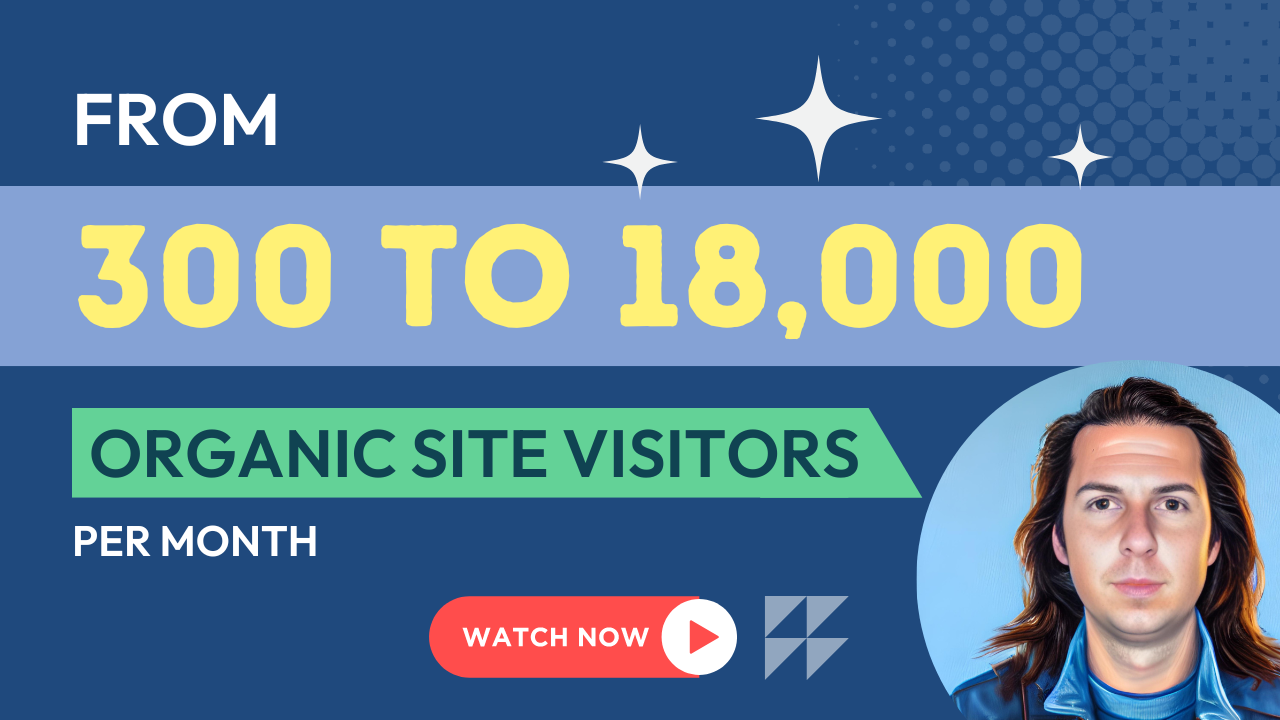
Inbound marketing - it's definitely grown in popularity as a marketing buzz word in the last 5 years. But inbound, content marketing is more than just a buzz word. It's more than blog posts, checklists, eBooks, and landing pages. Maybe it should be called Inbound Smarketing. Because when "add value first" is your strategy from marketing to sales, you can take the principles of a traditional content marketing strategy and apply it to a 1-on-1 situation between a member of your sales team and a prospect. When both marketing AND sales go "value first" the results can be hard to argue with.
Prospects Don't Want To Hear About What Your Product Does
If you're selling a SaaS product, or are in charge of SaaS marketing, your prospects actually, probably don't care about your product. They probably don't care about your company. (Read Ben Horowitz's blog, or The Hard Thing About Hard Things for a better explanation on why nobody cares about your company). Prospects and would-be customers are all busy trying to solve various problems of their own. Your focus should be on providing a solution to their problem. More specifically, a set of solutions for the problems specific to your unique customer personas. Prospects are only interested in your product because they perceive it can solve one of their problems. This is why starting a conversation with a prospect about your product will have you fighting an uphill battle, too often, too early in the sales process. Your prospect did not wake up hoping to hear about your scheduling and payment product feature. But they probably woke up thinking about how to reduce client cancellations and get paid up front when clients book a spot in their Saturday morning boot camp.
Let's focus on the "providing a solution to their problem" portion of the last paragraph. Ask yourself, do you spend more time thinking about how to get more product demos for your sales team? Or do you think more about how to solve a prospects' problems? Be honest. Changing your approach to customer acquisition won't happen until you're honest about your current mindset.
To better understand the difference between a "we need more demo requests" mindset and a "we need to help more prospects solve problems" mindset, write or draw out your current interaction flow between your brand and a prospect.
Here's an example of the former:
- Website visitor becomes a lead by downloading something.
- Marketing automation software notifies sales rep of a new lead.
- Sales reps call the lead, attempt qualify lead. If qualified, sales rep asks to set a product demo.
- Meanwhile, if prospect is not reached, they begin to receive string of product benefit emails. Goal? Drive prospect to book a product demo.
- Repeat in some format with some frequency for 4-6 weeks or longer.
In this process, each interaction is started by an outbound message put in front of a prospect. Product first. "Here's what our product does." But there are much better ways to segment out your prospects for lead nurturing.
Don't try to set a product demo. Instead, include a free business coaching session with the download or trial signup.
Don't ask your prospects if you can set a product demo. Tell them their download or free trial comes with a free business coaching session. By making a one-on-one phone call between a sales rep and a prospect a coaching session instead of a demo, you make the interaction about value transfer from sales rep to prospect, not the opposite. The value of the time to the prospect is made apparent. You want your content marketing strategy to leave prospects with this takeaway: "It's free, it's 20 minutes, and I could learn something." There's also a big benefit for your sales team. When you dedicate 20 minutes to business coaching, what you're really doing is forcing your sales team is to conduct a dilligent fact find.
"You want your content marketing strategy to leave prospects with this takeaway: 'It's free, it's 20 minutes, and I could learn something.'"
In the communications leading into the offer to book a coaching session, don't mention the product. Do write your copy about a problem your prospect likely experiences. Write about how there is a solution to this problem. But, do not mention your product. The tone of your copy should be very frank. Let the prospect know that the current problem that they're facing is one that only gets worse over time. Prospects should connect your free coaching session to a solution to their problem.
If your sales team understands the customer persona well, what was a discovery call is easily repositioned as a free coaching session.
Here's an example:
[Prospect]: "Yeah, so I really feel like I waste a lot of time going back and forth with my clients when it comes to scheduling. They communicate with me in like 4 or 5 different ways. Text, Facebook Messenger, LinkedIn, email, calls... I'm on my feet most of the day and managing it all on from my mobile, and I sometimes to forget to follow up. Not to mention, I have a lot of cancellations and missed appointments because of this. I'm losing money!"
The add-value-first response:
"Yeah, Robbie, you're not the first independent fitness professional I've talked to who deals with this. What we generally advise is, consolidate the ways clients can communicate with you, and do it in a way where they can easily pre-pay for the session they're trying to book. This way, you improve your cash flow and clients stay committed to attending. If you set this expectation at the start and show them how it's done, you'll probably find that you're a whole lot more organized, your saving time, and you're capturing lost revenue."
In this example, the sales rep sells a SaaS tool that consolidates the way a personal trainer and their clients communicate, book and pre-pay for training sessions. But notice how the response is centered on explaining a potential solution to Robbie's problem, based on the sales rep's previous experience? The sales rep doesn't jump to talk about the product.
Compare that to the "sell-more-product-at-all-costs" approach:
"Yeah, Robbie, our product would actually be a perfect solution for you. On our app you can communicate with clients directly, and they can book and pay from within our app. Can we get you started on a free trial?"
The add-value-first approach leads with a helpful tip, but leaves the door open for the prospect to ask about the product. When the prospect asks, product information can then be communicated. That's inbound content marketing in a 1-to-1 setting.
How to Execute this Shift in Content Marketing Strategy
Let inbound marketing automation software or in-app messaging to do the heavy lifting for you
Whether you're offering a free trial with no paywall, or you're running a simple downloadable content lead generation campaign, your prospects should be getting an automated drip email campaign after entering your system. More on that in a bit.
But first, don't overlook the "Thank You For Downloading" page. Once a prospect fills out the form, they need to be redirected to another landing page. This page is often referred to as the "Thank You" page, where you can say, "thank you for downloading our [insert content piece here!] You will receive an email shortly."
Now, here is your first opportunity to additionally qualify your new prospect. Below the "thank you for downloading", say something like: "Your free eBook comes with a free 20-minute 1-on-1 business coaching session, where we'll help you with how to run a more profitable business." Follow this with a call-to-action button.
Using a call-to-action button, you can now send prospects to a place where they can book the coaching session. (For more advanced lead nurturing, you should split out eBook downloaders from eBook downloaders who clicked the button to book the coaching session but fell off in the process. More to come on this in a future post.)
Check out our eBook on customer acquisition strategy for more details.
Your calendar / booking mechanism makes all the difference in your inbound content marketing strategy.
We used Calendly to follow through with the inbound coaching session bookings. Why Calendly? The UI was really, really easy to use, particularly on mobile. Even better, when you added in a group of sales reps into a team, Calendly aggregates the open time available across the entire team's calendar. This way, if 3 out of 4 reps were busy at 10:30am but one person had an opening, the 10:30am time would appear as open to the prospect. We found that bookings tended to bunch up in the mid-morning and then again in the late afternoons, so this helped us maximize capacity.
Keep your automated marketing emails short, sweet and free-value-oriented.
Let's go back to your automated drip email campaign. To organize this, write out the 4-5 pain points your current customers experience. Focus in on the pain points your product can potentially solve. Now, turn these into blog posts. Focus the majority of the copy on build up of the pain point. This will show your prospect you understand their situation.
Next, create automated emails that drive to your blog post. Keep the copy in the email short and sweet. Used linked text behind the article title. Now, the key in this email is the P.S. below your sign off. Here is where you include the offer for the business coaching session.
To improve the conversion rate on this offer, survey a group of prospects who previously went through a business coaching session. The survey should allow you to figure out the percentage of people who found value in the session. At amSTATZ, this percentile was in the high 90s, so we used that in the copy as a supporting "reason to believe".
The business results created with our inbound content marketing strategy.
When I was running marketing at amSTATZ, we transformed our sales when we switched to a "business coaching" and free-value-first approach. When we started offering inbound business coaching sessions, we went from setting 150 outbound product demos a month, to having 250 inbound business coaching sessions appear on our sales reps' calendars. Better yet, the the inbound business coaching sessions had a 44% higher run rate than the outbound sessions. Sales reps were talking to prospects who wanted to learn more, not prospects who said yes to a demo but in reality weren't that serious.
In 6 months, we improved revenue by 6X. (For more details on how our business results improved, download our customer acquisition strategy eBook.)
If you end up implementing a similar customer acquisition process as the one I've just described, let me know how it goes. We'd love to hear about the results you achieved.


